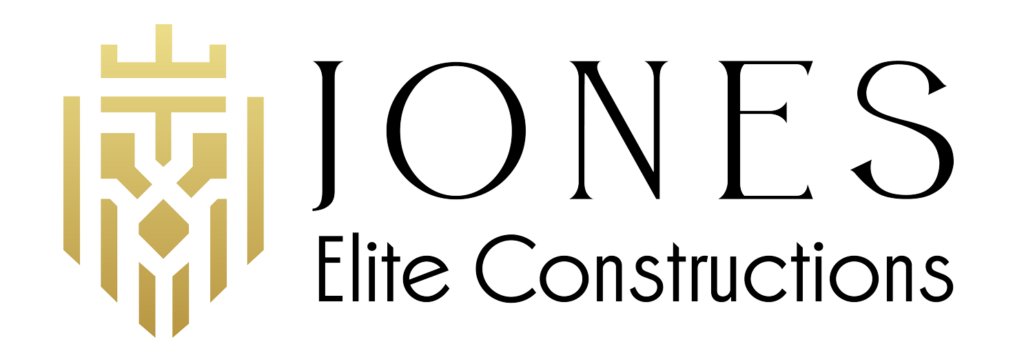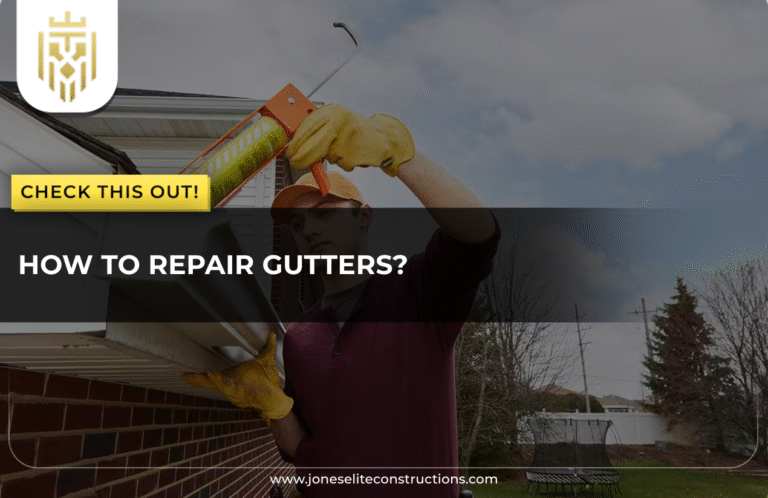Introduction to HVAC Inspection
A HVAC (Heating Ventilation and Air Conditioning) inspection is a maintenance procedure conducted to examine every part of your HVAC system, including the air conditioning, heat pump, and ventilation systems. Going through this step-by-step process helps review both safety and performance, supporting the performance of your system.
Looking after your HVAC system with regular inspection means any problems can be caught in time and your system will serve you for a much longer period.
Why Regular HVAC Inspections Matters?
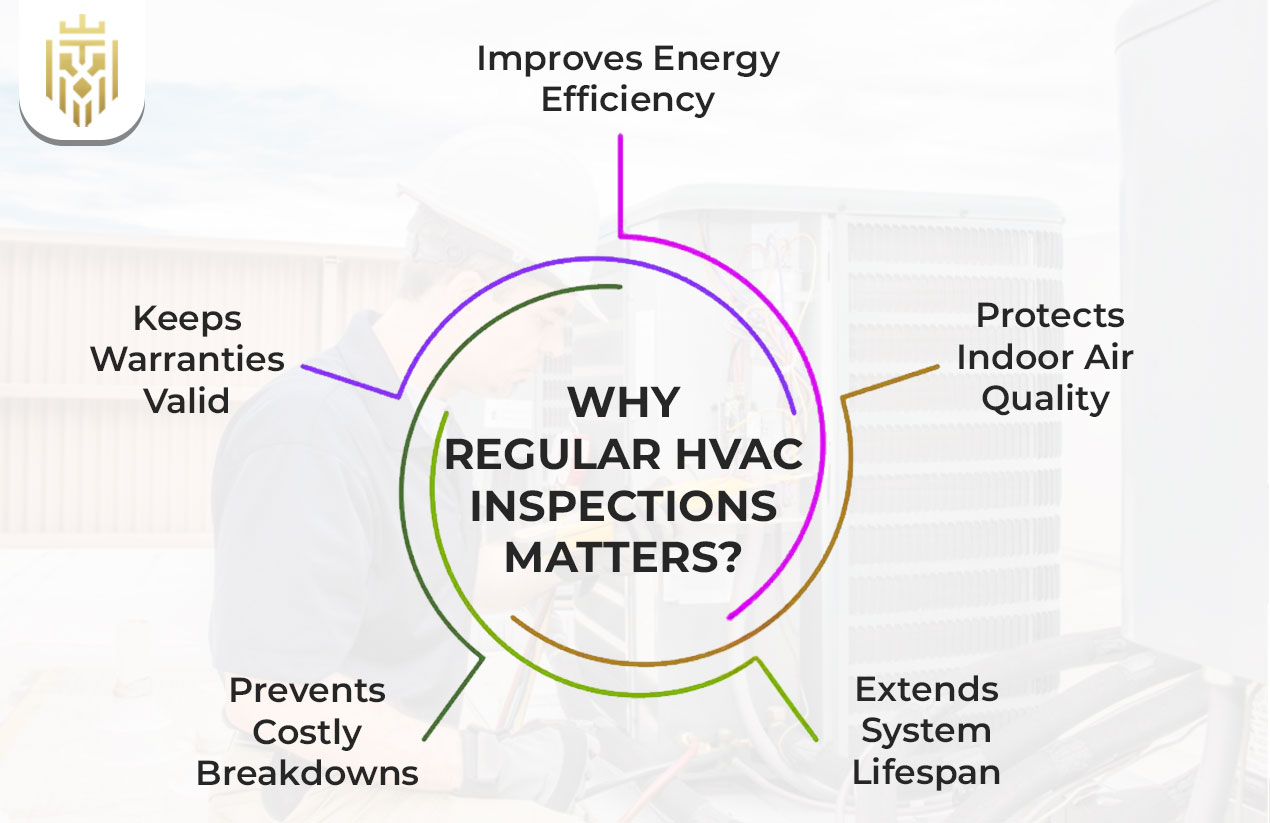
Inspections carried out often help your HVAC work at its best, use less energy, improve the quality of the air inside your home, and keep the system running longer. It also helps take care of the car before anything breaks and ensures no warranty is void.
Improves Energy Efficiency
Well-arranged HVAC inspections guarantee efficient use of power by making every unit, such as the air conditioner and heat pump, run efficiently. You should clean and replace the filters, examine the refrigerant, and adjust the thermostat for every visit. Preventive maintenance reduces your electricity or gas bills and ensures your HVAC inspection advances your savings.
Protects Indoor Air Quality
When HVAC systems are regularly inspected, indoor air stays clean because pollutants and allergens are filtered out. Mold and dust collect less when air conditioning and ducts are well maintained. An inspection checklist for an HVAC system enables high air quality inside, supports good health inside the house, and avoids possible system-related pollution.
Extends System Lifespan
HVAC preventive maintenance lets technicians find early signs of deterioration so that components, such as the heat pump and blower, are better protected. During an HVAC inspection, it is checked if air and refrigerant are flowing properly. Because of this, breakdowns are avoided, costs for repairing the system are reduced, and your air conditioning unit can operate for years.
Prevents Costly Breakdowns
Regular inspections of HVAC systems can find any challenges and avoid sudden breakdowns. Looking after the heat pump, condenser, and filters regularly reduces the possibility of significant problems. Referring to the HVAC checklist saves time and money and helps the system work correctly at all times.
Keeps Warranties Valid
Getting your HVAC system inspected every so often guarantees that your warranty will remain valid. Most companies demand proper records of HVAC preventive maintenance when granting a warranty. Neglecting scheduled inspections or not following the HVAC list could make your insurance void. Evaluating systems on a regular basis keeps them working well and avoids major damage that comes with neglect.
How Often Should I Inspect My HVAC system?
To get the best out of your HVAC, it should be checked every spring and fall to care for heating and air conditioning. By following this procedure, you guarantee your car’s good performance, energy efficiency, and warranty coverage. Checking the system often may be necessary, depending on how old it is, the place where it is used, and if it’s for commercial projects.
Apartment HVAC Systems
It is a good idea to have the apartment’s air conditioning and heating systems checked by an expert at least once every year, preferably twice for proper care. These examinations help lower the chances of problems by supporting energy saving measures. Regular HVAC maintenance makes the system healthier and benefits the comfort of the residents.
Commercial HVAC Systems
It is necessary to inspect the HVAC system of a commercial unit at least twice a year: in spring and fall. This guarantees that the air conditioning and heat pump parts run smoothly all through each season. Regular maintenance of the HVAC helps detect problems early, saves money, and makes sure people in offices, stores, or factories are comfortable.
Tools Needed for HVAC Inspection
Checking the HVAC with complete inspection means using diagnostics with multi-meters, testing thermostats using thermometers, and locating any leaks with refrigerant leak detectors. A competent inspection checklist template should mention both thermal imagers and presence of essential hand tools. They enable technicians to thoroughly check the HVAC system with great accuracy and haste.
Complete HVAC Inspection Checklist
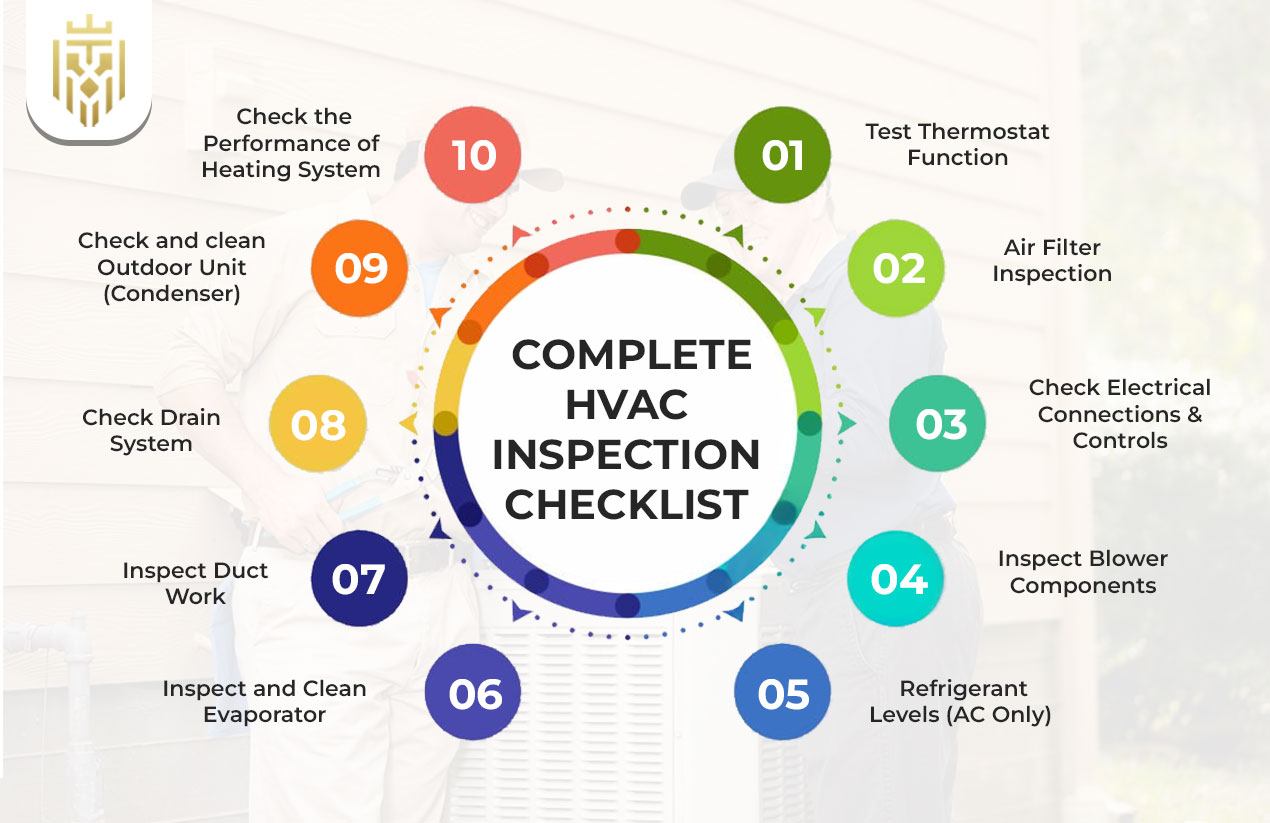
A good HVAC inspection checklist makes sure you inspect filters, thermostats, ducts, the amount of refrigerant, and all the electrical parts. This makes things easier for preventive maintenance, as it lets us discover problems ahead of time.
Thermostat Function Test
A solid HVAC inspection begins by looking at the thermostat. Make sure the temperature readouts are correct, switches answer quickly, and that air conditioning and heating cycles begin or stop when needs arise. Labor inspectors should use a separate thermometer to prove accurate service during every HVAC inspection.
Air Filter Inspection
The inspection process always includes looking at the air filters to see if they are dirty, moldy, or blocked. Proper installation of filters keeps air from flowing around them. Fresh filters make it work more efficiently and stop dust from getting to the important parts inside your unit.
Check Electrical Connections & Controls
When checking the HVAC system, it is necessary to review all the electrical elements like low-voltage wires, contractors, and relays. Strong links and secured practices avoid mistakes and break downs. These routine check-ups as part of maintenance guarantee your heat pump or AC operates properly and does not create any electrical dangers.
Inspect Blower Components
This part of the inspection for an HVAC system requires checking fan blades, belts, and the motor. If there is dust or a misalignment in a machine, it can reduce its efficiency and generate overheating. If you check your blower thoroughly according to a checklist, air circulation and the performance of your air conditioner and heat pump will be improved.
Refrigerant Levels (AC Only)
Checking the refrigerant of air conditioning systems is very important. If charges aren’t set correctly, the cooling will suffer, the battery will wear out, and freezing may take place. HVAC checklists are used to maintain the proper levels, thus avoiding any inefficient use of the system. It must be included in every HVAC preventive maintenance step.
Inspect and Clean Evaporator
It is important to include evaporator cleaning in the inspection of an HVAC device. This area gets too full with dirt, which causes airflow and cooling problems. You should clean the coil to maintain how the air conditioner works properly. Failing to complete this job often leads to inefficient HVAC preventive maintenance and lessens the useful life of your air conditioning system.
Inspect Duct Work
During a duct inspection, leaks, crumbled areas, and incorrect sealed joints are looked for. Good design of the duct system increases the flow of air and the uniformity of temperature throughout the building. Your HVAC inspection should pay attention to the insulation, operation of the dampers, and indications of dust or mold. Following these steps boosts how well an air conditioner or heat pump functions.
Check Drain System
The drain system is an essential part of what should be checked during HVAC inspection. Check to see if condensate lines have clogged or there are any leaks, pans are damaged, or you can see a lot of sludge. Water leaks may hurt the ceiling or allow mold to start. Part of maintaining an HVAC system is to inspect the drains to eliminate problems due to moisture.
Check and Clean Outdoor Unit (Condenser)
Remove all the leaves, debris, and dirt that accumulate near your condenser. Guide yourself in coil and fin cleaning, observing airflow, and inspection of electrical components by using the HVAC checklist. Keeping your air conditioner or heat pump well maintained helps it to cool the house well when it’s very hot outside.
Check the Performance of Heating System
You need to review the heating abilities, safety features, and fan working of your system. Verifying the communication between the thermostat and inspecting the different components of the heat pump or furnace can stop heating problems. Having the system examined in detail is necessary to save energy and make the home cozy during cold months.
FAQs
1) How often should I inspect my HVAC system?
It’s best to have the HVAC system inspected twice a year, once for summer cooling and once for preparing it for heating in the winter. As a result, your system will be well cared for and keep operating efficiently all year.
2) What is the best time of year to schedule an HVAC inspection?
It is best to get an HVAC inspection done in the spring and fall. This puts your heat pump or AC in the right shape for use during the new season and aims to avoid future issues by finding and fixing problems as soon as possible.
3) What is an HVAC Inspection?
An HVAC (Heating Ventilation and Air Conditioning) inspection is a maintenance procedure conducted to examine every part of your HVAC system, including the air conditioning, heat pump, and ventilation systems. Looking after your HVAC system with regular inspection means any problems can be caught in time and your system will serve you for a much longer period.
4) When should I call a professional for an HVAC inspection?
Make sure to call a professional when you notice strange sounds, less powerful air, higher bills, or the system not working well. With a checklist, trained experts are sure to look at every important part of your HVAC system.
